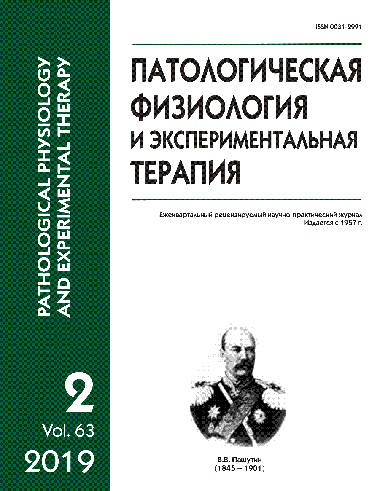Effect of ipidacrine on acute pain and development of neuropathic pain syndrome in wistar rats
Keywords:
ipidacrine, acute pain, pain threshold, neuropathic pain syndrome, pain sensitivity, autotomy, rats
Abstract
The aim of the study was to elucidate specific features of the effect of ipidacrine (IPIGRIKS, Slovakia) оn acute pain and development of neuropathic pain syndrome (NPS) in Wistar rats. Methods. Two series of experiments were performed. In the first series, effects of ipidacrine were studied on models of acute pain. Thresholds of pain sensitivity (PS) were determined before and 30 and 60 min after ipidacrine injection (0.5 and 1 mg/kg, i.m.). Changes in individual pain sensitivity were assessed with two standard tests, tail flick and hot plate. In the second series of experiments, the effect of ipidacrine on the development of NPS was studied. NPS was induced by transection of the left sciatic nerve at the level of popliteal fossa in experimental and control animals. The NPS intensity was evaluated in scores based on severity of autotomy on the operated extremity, time of autotomy emergence, and number of animals with autotomy. Ipidacrine (1 mg/kg, i.m.) was injected daily for 21 days. Results. Ipidacrine at a dose of 0.5 mg/kg did not exert an antinociceptive effect – the PS threshold did not change in the tail flick and hot plate tests. Ipidacrine at a dose of 1 mg/kg 30 min before testing did not affect the PS thresholds in the tail flick and hot plate tests; at 60 min after the ipidacrine injection, the PS thresholds increased by 15.8% (*p = 0.033) in the tail flick test compared to the value before the ipidacrine injection. Conclusion. Ipidacrine significantly delayed the development of NPS but did not affect acute pain in the tail flick and hot plate tests.Downloads
Download data is not yet available.
Published
27-05-2019
How to Cite
Karpova M. N., Kuznetsova L. V., Klishina N. Y., Kukushkin M. L. Effect of ipidacrine on acute pain and development of neuropathic pain syndrome in wistar rats // Patologicheskaya Fiziologiya i Eksperimental’naya Terapiya (Pathological physiology and experimental therapy). 2019. VOL. 63. № 2. PP. 29–33.
Issue
Section
Original research






